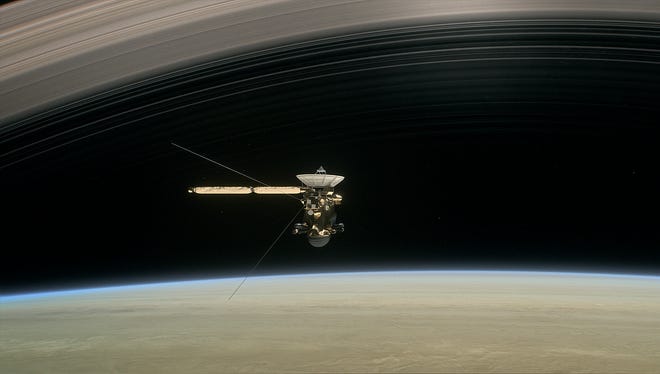NASA's doomed Cassini makes first perilous pass between Saturn and its rings

NASA's Cassini spacecraft is expected to make its first of 22 passes between Saturn and its rings Wednesday.
Over the next five months, Cassini will pass between Saturn and its rings before hurtling into a death-dive into the planet on Sept. 15 that will destroy the spacecraft and end the mission.
Google marked Cassini’s first pass between the planet and its rings with a doodle on the main search page, depicting the spacecraft cheerily collecting data.
Early Wednesday, NASA's Cassini Twitter account posted that the spacecraft was preparing to make its first pass between the planet and its rings.
"This is it! Through the gap between #Saturn and its rings. Instruments are on, but we're out of contact with Earth. Here we goooooo!"
During Wednesday's first pass through, Cassini will travel at 70,000-plus mph through the 1,200-mile-wide-gap between Saturn's atmosphere and its rings. Because the spacecraft is traveling so quickly, there is some risk of impact with particles that could damage the spacecraft.
Cassini project manager Earl Maize told AP that from a navigation standpoint "this is an easy shot," though a few other later crossings may be more perilous.
"[We're] kind of flirting with the edge of where we think it's safe," Maize told AP.

Launched in 1997, Cassini has been studying Saturn and its moons since it arrived there in 2004. The Cassini mission is a cooperative project of NASA, the European Space Agency and the Italian Space Agency.
In the next few months, before Cassini's final plunge, the spacecraft will collect information on Saturn's rings, ring-moons and the planet's atmosphere, according to NASA.
And while it's easy to lament the ultimate demise of Cassini, the spacecraft still has a good run ahead of it.
“I think it is too early to eulogize Cassini on the occasion of its death, as incineration is five months away," said Jonathan Lunine, the director of the Cornell Center for Astrophysics and Planetary Science, who has worked on the Cassini mission since the 1980s.
More coverage:
Cassini spacecraft to make last flyby with Saturn's Titan on Saturday
NASA: Nearly all elements needed for life found on Saturn's moon Enceladus